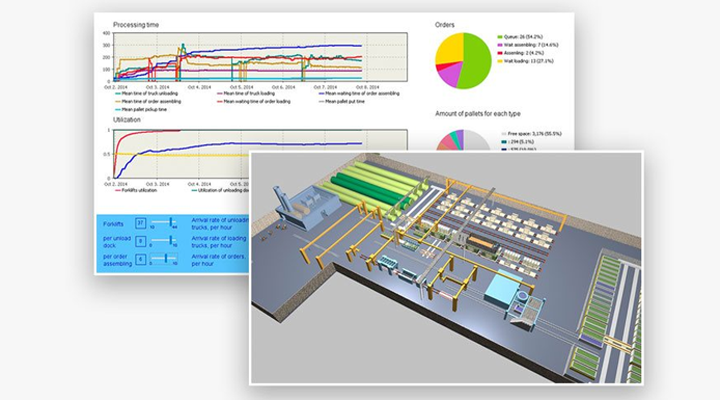

Then, I tried casting the agent1 and agent2 to dog and cat as seen in ( queue example2), but of course during the runtime I get the error dog can't be casted to cat or viceversa as we can't know if agent1 is going to be of type cat or dog at a given time. First I tried to do it directly in the queue using the agent type "Agent", as the attribute name is the same for both entity types ( queue example1), but then I get the error "age cannot be resolved or is not a field" as the general agent type "Agent" doesn't have such an attribute. The main issue I face is that the queue block (as almost all blocks) require to define a single agent type in the advanced properties.
#Anylogic agent thread how to#
My first question is: How to order the queue by agent comparison using the age attribute? The agents go into a unique queue that should be ordered by age and then be served by a single server and get out of the system as seen in the following example Proposed model. This agents have a parameter age of type double.

Articles/Launch - Bill Simon Interview-Correccted.Let's have a model in which two type of agents arrive to the system: dogs and cats. Articles/Launch - Bill Simon Interview-Correccted.pdf They also sent mylar/polyglassine samples that were eventually used for the Streak." This is a base class for all agent classes created by the user. The first (June 22-26) will be covering more basic material in AnyLogic. Notice: We will be running two Agent-Based Modeling Bootcamps for Health Researchers in the summer of 2015. One reply, from Euclid Spiral Paper Tube Company included samples of a polykraft/polyglassine construction that struck us immediately as perfect for body tubes. An increasing number the videos now online are short segments that demonstrate particular actions or skills.

George sent inquiries to every company listed under paper tubes in Thomas Register.

About those body tubes… Vern put George Miller, our purchasing agent, on the task of trying to come up with a source of better engine tubes. When we switched to electronic inventory systems we assigned purely numerical part numbers, and the old BT number became just a part of the description. By that point the system was a huge dinosaur, but we were stuck with it. The complexity came a few years later as we added special tube sizes for specific scale models. But the start time and end time is quite wrong. Normally this constructor calls are generated automatically by AnyLogic. Well i want the total time spent (Cycle Time) in the system by every agent in anylogic enter image description here. But one shortcoming is the starting time of nth agent is always the end time of n-1 agent. AnyLogic is a very nice but costly commercial tool. As long as your top-level agent is Main (normal case), this will work. I am measure time using TimeStart and TimeMeasureEnd block in anylogic. hy, Agent-based modeling (ABM) is a style of modeling in which individuals and their interaction. This will give you the main link Use getEngine ().getRoot () at any point in your model. BT-60, of course, accommodated 3 BT-20 tubes inside, and that was the entire basis for the system. 1 Answer Sorted by: 0 Two options: embedd an agent population on Main and make your ResourcePool add agents to that on creation. I really didn’t know anything about good practice in part numbering, so I just tried to use numbers that would let us add in-between sizes later on. Simon: The body tube designations were my fault. Is this correct? And if so, how complicated (or simple) was it to come up with this system? "Launch: I read somewhere that you actually came up with the body tube designations (BT-50, BT-60, etc.) that, in general, became the hobby’s standard way to measure the airframes of these rockets. A human and Method: Our approach is to integrate the thread and GICoordinator is called a human-agent team in this paper, delegate methods provided by the. Bill Simon provided some insight in a 2007 Launch magazine interview: No logic, just an historical artifact from the worlds biggest hobby rocket company.


 0 kommentar(er)
0 kommentar(er)
